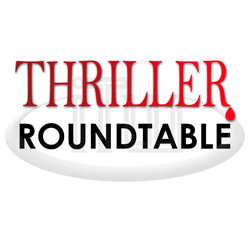

June 20th to the 26th: “All stories boil down to either, someone went on a journey or a stranger comes to town. Do you agree?”
The late John Gardner suggested that all stories boil down to either, someone went on a journey or a stranger comes to town. Do you agree? At their very core, how do you view your thrillers? Thomas Kaufman, Reece Hirsch, Sidney Williams and CE Lawrence will discuss that, and more!
Reece Hirsch‘s debut legal thriller THE INSIDER was published by Berkley Books in May 2010. Reece is a partner in the San Francisco office of Morgan, Lewis & Bockius specializing in privacy, security and healthcare law. He is also a member of the board of directors of 826 National, a San Francisco-based non-profit organization that conducts writing programs for young people in underserved communities.
Sidney Williams is the author of MIDNIGHT EYES, a new crime thriller from Crossroad Press. It’s currently available in e-book format and coming in trade paperback. He is also the author of several mass market paperback horror thrillers. For a number of years, he worked as a reporter, often covering the late night police beat. He has also worked as a librarian and web editor. He holds an MFA from Goddard College.
C.E. Lawrence is the byline of a New York-based suspense writer, performer, composer and prize-winning playwright whose previous books have been praised as “lively. . .” (Publishers Weekly); “constantly absorbing. . .” (starred Kirkus Review); and “superbly crafted prose” (Boston Herald). Silent Screams and Silent Victim are the first two books in her Lee Campbell thriller series. Silent Kills comes out later this year. Her other work is published under the name of Carole Bugge.
Thomas Kaufman is the author of DRINK THE TEA. He is also an Emmy award-winning motion picture director & cameraman who has spent a lot of time with cops, filming “The FBI Files,” “The Prosecutors,” and “New Detectives” for Discovery.
- LAST GIRL MISSING with K.L. Murphy - July 25, 2024
- CHILD OF DUST with Yigal Zur - July 25, 2024
- THE RAVENWOOD CONSPIRACY with Michael Siverling - July 19, 2024

